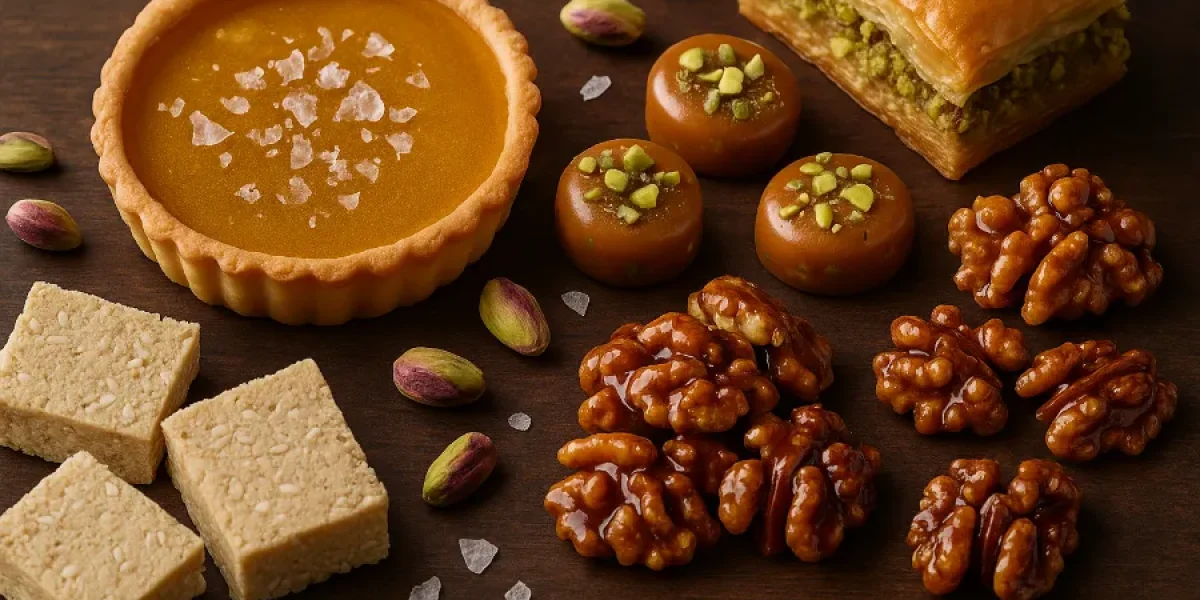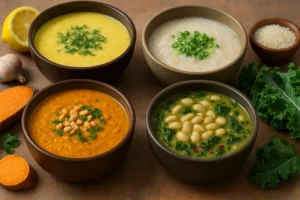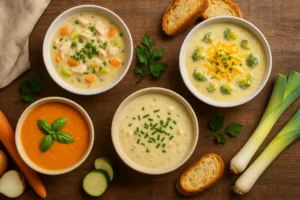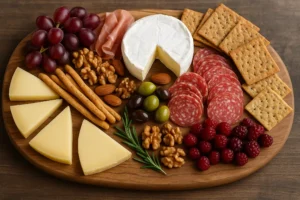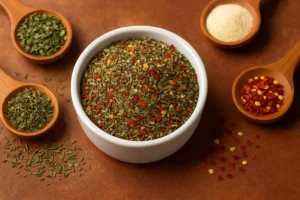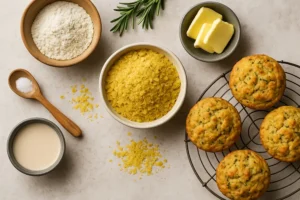There’s something irresistible about sweet and salty desserts — that moment when creamy caramel meets a whisper of sea salt, or when honey and nuts fuse into golden perfection. It’s a flavor dance that awakens every taste bud.
From Mediterranean classics to modern patisserie, chefs around the world chase this balance — a combination that transforms good desserts into unforgettable ones. Whether you’re a home baker experimenting with honey or a professional exploring texture science, understanding the art behind sweet and salty desserts opens endless possibilities.
Let’s take a journey through the world’s most beloved variations — from honey desserts to nutty pralines, nougats, and salted caramel creations that define the golden standard of indulgence.
The Science Behind Sweet and Salty Desserts
The secret lies in how our taste buds respond to contrast. Salt reduces bitterness and enhances sweetness, while fat, sugar, and protein create depth through browning and caramelization. This phenomenon — known as the Maillard reaction — happens when heat transforms sugars and amino acids into hundreds of complex flavor compounds.
That’s why toasted nuts, caramelized honey, or golden pastry taste richer and more aromatic. The Maillard reaction is the unsung hero of sweet and salty desserts, creating the warmth and crunch we crave.
Honey Desserts: Nature’s Sweet Gold
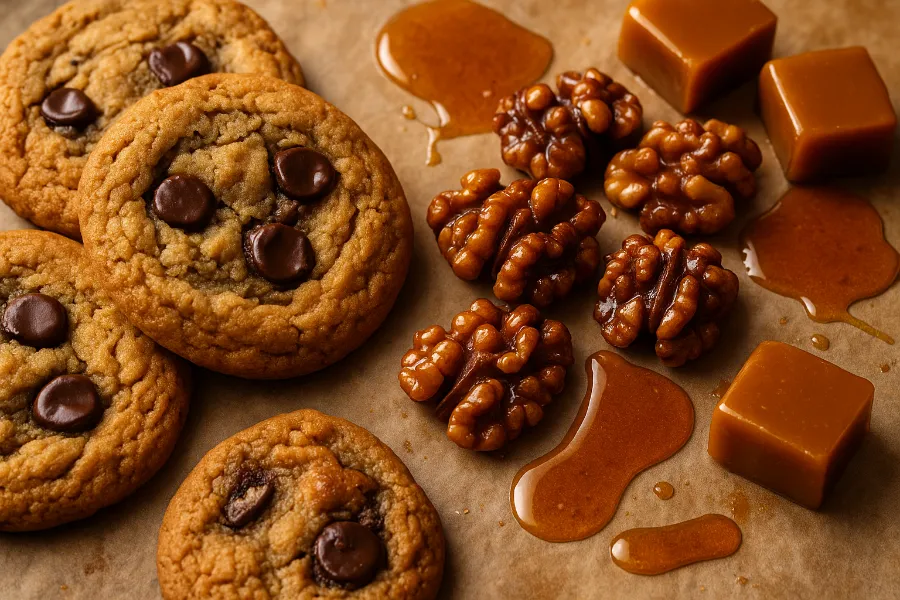
Honey has been used in desserts for millennia — long before refined sugar existed. Its floral sweetness, smooth texture, and natural acidity make it a versatile ingredient across cultures.
In honey desserts, chefs often rely on raw or specialty honeys to build depth. For example, clover honey delivers a light, buttery sweetness, while darker honeys like buckwheat or chestnut add bold, earthy tones. The choice of honey can completely transform a dessert’s flavor profile.
Try This: Honey Tart with Sea Salt Flakes
Bake a shortcrust base, fill it with a blend of cream and honey, and finish with sea salt flakes for the perfect sweet-salty edge. The salt enhances the honey’s floral notes, while the crisp crust adds balance.
Nutty Desserts: Texture, Warmth, and Aroma
If honey brings sweetness, nuts bring structure. Nutty desserts are the backbone of many sweet-salty pairings, especially in Mediterranean and Middle Eastern cuisine.
From toasted walnuts and almonds to hazelnuts and pistachios, each nut has a unique flavor that deepens with heat. Toasting them triggers the Maillard reaction — unlocking toffee-like undertones and a crunchy finish.
Chef’s Note:
For even flavor, toast nuts at 325°F (160°C) for 8–12 minutes. Stir halfway through and sprinkle with salt while still warm — that’s when they absorb flavor best.
Nougat: The Soft Side of Sweet and Salty
Few sweet and salty desserts strike harmony quite like nougat — that pillowy blend of whipped egg whites, honey, and roasted nuts. Found across France, Italy, and Spain, nougat sits at the intersection of candy and pastry art.
Classic Italian torrone and French nougat de Montélimar rely on a precise balance of sweet honey and salty roasted almonds or pistachios. Some modern versions use pistachio paste for a creamy green hue and luxurious flavor.
Pro chef tip: Add a few crystals of sea salt flakes at the end of cooking. The gentle salt cuts through sweetness, making the nougat taste lighter and more refined.
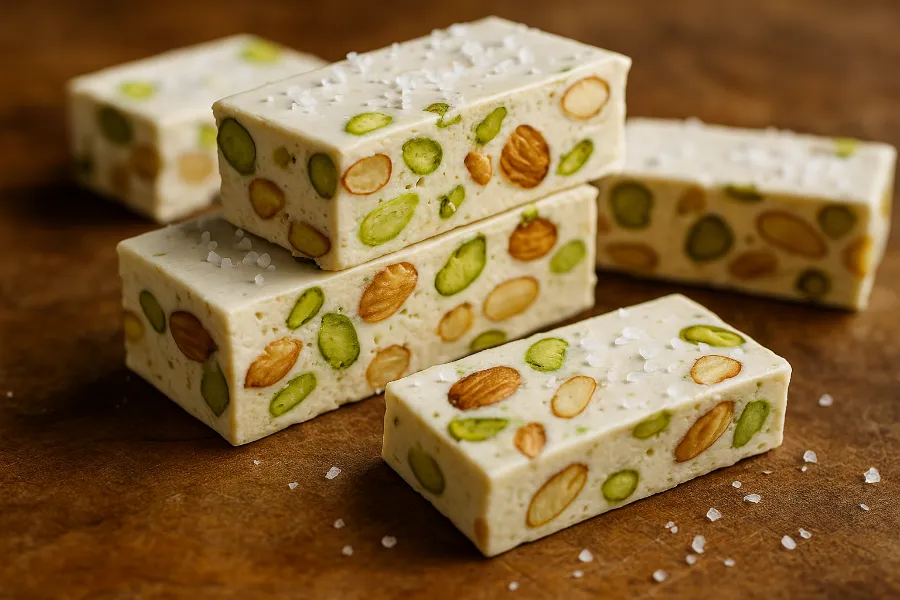
Praline: Where Roasted Nuts Meet Caramel Magic
Praline is another star in the sweet-salty constellation — a marriage of caramelized sugar and nuts that can be ground into paste or left crunchy for texture.
French chefs typically use almonds or hazelnuts, while Belgian versions often incorporate milk chocolate for a silky finish. The caramelization creates deep amber tones through the Maillard reaction, giving praline its unmistakable aroma.
Try This: Salted Honey Praline Spread
Blend caramelized almonds, honey, and a pinch of salt into a smooth praline paste. Spread it on crepes, drizzle over ice cream, or swirl into cheesecakes for instant luxury.
Salted Caramel: The Modern Classic
No discussion of sweet and salty desserts is complete without salted caramel — the modern icon of flavor contrast. Born in France, popularized by Breton pastry chefs, this simple yet profound sauce has conquered the world of desserts.
Caramel starts when sugar melts and browns, releasing nutty and buttery notes. Adding cream and butter creates luscious depth, but the magic happens when you finish it with sea salt flakes. The salt punctuates the richness, ensuring the sweetness never feels overwhelming.
How to Make Perfect Salted Caramel:
- Melt 1 cup sugar until amber.
- Stir in ½ cup cream and 3 tbsp butter.
- Finish with ½ tsp sea salt flakes.
- Drizzle over brownies, custards, or popcorn.
Culinary twist: Replace part of the sugar with clover honey for a naturally floral caramel with subtle complexity.
Pistachio Paste: A Chef’s Secret Weapon
Pistachios are more than just decoration they’re a chef’s tool for color, flavor, and aroma. Blended into pistachio paste, these nuts create a velvety ingredient that anchors pastries, gelatos, and nougats alike.
Pistachio paste’s earthy sweetness pairs beautifully with honey, white chocolate, and sea salt. Luxury hotels and pastry chefs often use it in mousse layers or fillings to evoke the elegance of Mediterranean sweets.
Pair it with: Honey mousse, salted caramel drizzle, and crushed roasted nuts. The pistachio’s subtle bitterness balances the sugar, creating true harmony.
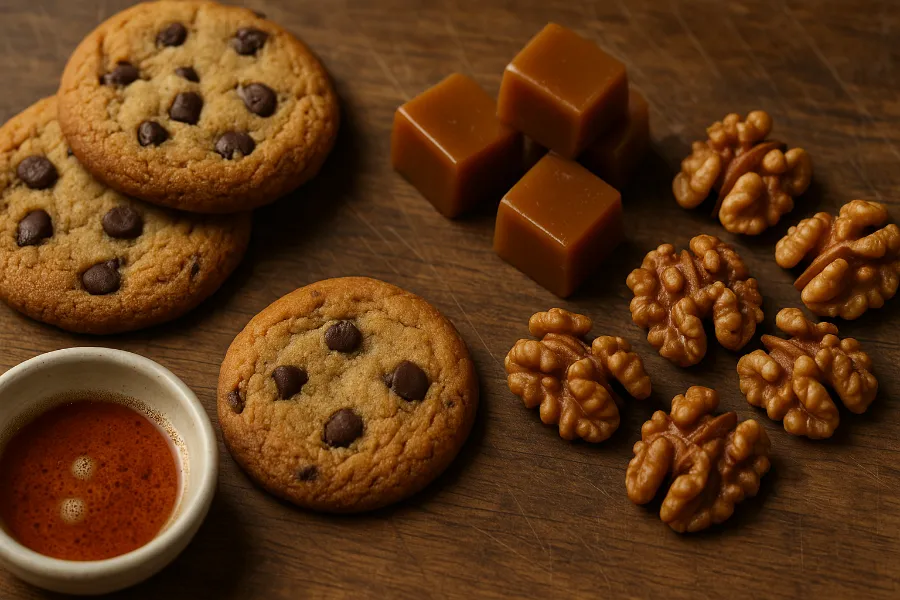
Toasted Walnuts and the Power of Roasting
Among all nuts, toasted walnuts offer one of the most satisfying contrasts in desserts. Their natural tannins mellow with heat, creating a buttery, almost coffee-like flavor.
Roasting walnuts before adding honey or caramel enhances aroma and crunch — especially important in honey desserts like baklava or nut tarts. The Maillard reaction works overtime here, turning simple ingredients into something rich and layered.
Chef’s Insight:
Toss your toasted walnuts in a drop of clover honey and a sprinkle of sea salt flakes before using them as toppings. You’ll never go back to plain nuts again.
Tahini Halva: Ancient Sweetness Reimagined
No region celebrates sweet and salty desserts like the Mediterranean and Middle East. And no dish represents that heritage better than tahini halva — a sesame-based confection sweetened with honey or sugar.
The tahini brings roasted, nutty intensity; the honey adds gentle sweetness. Modern chefs elevate it with sea salt flakes, pistachio paste, or even swirls of dark chocolate.
Try This: Sea Salt Honey Halva
Whip warm honey into tahini until thick and glossy, fold in crushed pistachios, then sprinkle with salt before it sets. Serve it with bitter coffee or Greek yogurt for balance.
Phyllo Pastry and Mediterranean Sweets
In the world of Mediterranean sweets, few desserts are as symbolic as baklava — thin layers of phyllo pastry brushed with butter, filled with nuts, and soaked in honey syrup. The contrast of crisp texture, nutty filling, and sticky sweetness embodies the spirit of sweet and salty desserts.
Greek baklava often includes toasted walnuts or pistachios, while Turkish versions might feature hazelnuts or almonds. A few grains of salt or lemon zest in the syrup highlight the honey’s natural brightness.
Chef’s Inspiration:
Hotels like The Peninsula Istanbul or Ritz-Carlton Kyoto have reimagined baklava with salted caramel drizzle, pistachio paste, or even a touch of praline cream — proving how timeless Mediterranean flavors can evolve.
Clover Honey: The Gentle Sweetener
If honey is the heart of many sweet and salty desserts, clover honey is the soul. It’s mild, smooth, and easy to pair — perfect for glazes, sauces, or mousses.
Unlike darker honeys, clover honey doesn’t overpower delicate flavors like cream, fruit, or nuts. It’s ideal for desserts where balance matters most.
Chef’s Pairing Ideas:
- Clover honey ice cream with salted pistachio brittle
- Clover honey-glazed tart topped with toasted walnuts
- Greek yogurt parfait layered with halva and sea salt flakes
Each version showcases honey’s ability to unify flavors — the link between sweet and savory, creamy and crisp.
Sea Salt Flakes: The Finishing Touch
Every great dessert needs a final flourish — and few ingredients do it better than sea salt flakes. These delicate crystals don’t just season; they create contrast and texture.
When sprinkled over honey tarts, caramel sauces, or chocolate ganache, they provide a satisfying crunch and a burst of flavor. The key is moderation — a light dusting highlights, not overwhelms.
Fun fact:
Many Michelin-starred pastry chefs prefer Maldon or fleur de sel because their flaky structure dissolves slowly, creating a lingering balance of sweet and salty.
Mediterranean Sweets: Where It All Began
The origins of sweet and salty desserts trace back to the Mediterranean — a region where honey, nuts, and sea salt were everyday luxuries. From Greek and Turkish baklava to Italian torrone and French nougat, these Mediterranean sweets shaped global pastry traditions.
Today’s chefs pay homage by blending these old-world ingredients with modern techniques. A drizzle of salted caramel over baklava, or a honey-pistachio parfait dusted with sea salt flakes, bridges centuries of flavor evolution.
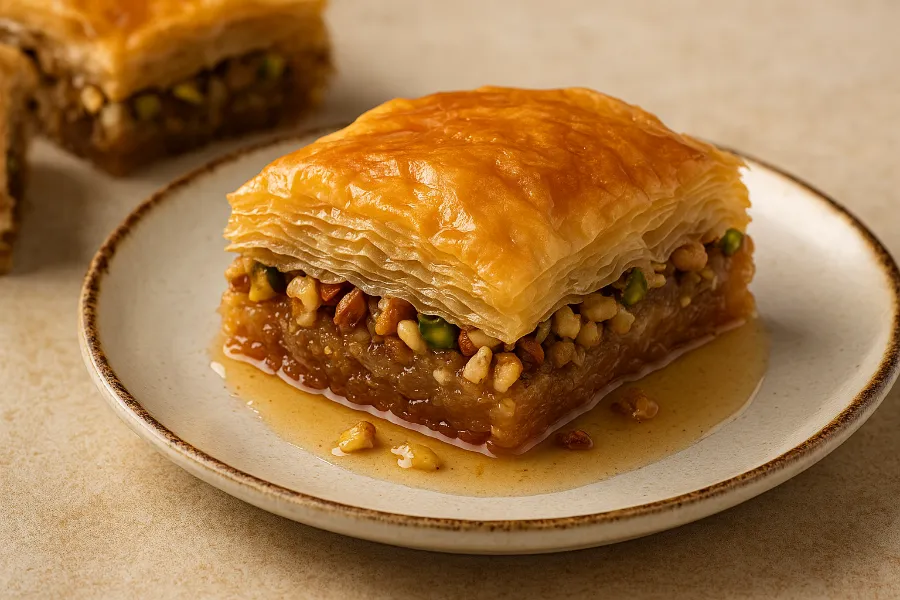
Modern Inspiration:
- Baklava Cheesecake with salted honey syrup
- Honey Panna Cotta with pistachio praline crunch
- Halva Brownies with sea salt flakes
- Honey Walnut Gelato finished with clover honey drizzle
Each dish celebrates contrast — sweet, salty, crunchy, creamy — the universal language of dessert perfection.
Final Thoughts: The Art of Balance
The beauty of sweet and salty desserts lies in their equilibrium. It’s not about overpowering sweetness or harsh saltiness; it’s about finding the sweet spot — literally.
Honey adds nature’s nectar, nuts provide body, salt sharpens focus, and caramelization deepens color and taste. Whether you’re baking at home or plating desserts in a restaurant, every drizzle of honey or sprinkle of salt tells a story of balance.
So, next time you crave something decadent, reach for your honey jar, your toasted nuts, and a pinch of sea salt flakes. The secret to unforgettable desserts isn’t in complexity — it’s in contrast.
FAQs
It’s all about balance. Salt enhances sweetness by sharpening flavors, making each bite more complex and satisfying.
Toasted walnuts, pistachios, almonds, and hazelnuts are perfect. Their roasted flavors pair beautifully with honey, caramel, and chocolate.
Always use flaky or finishing salts like Maldon or fleur de sel. They add delicate crunch and a burst of flavor without overpowering sweetness.
It’s the science behind browning — creating deep, roasted, caramel-like notes in nuts, pastries, and caramel sauces.
Yes, but reduce liquid elsewhere since honey adds moisture. Clover honey is a great choice for mild, balanced sweetness.
Baklava, tahini halva, and nougat are timeless favorites. They blend honey, nuts, and flaky pastry with a touch of salt for harmony.
Use pistachio paste, sea salt flakes, or praline for upscale flavor. These elevate texture and balance without complicating your recipe.

